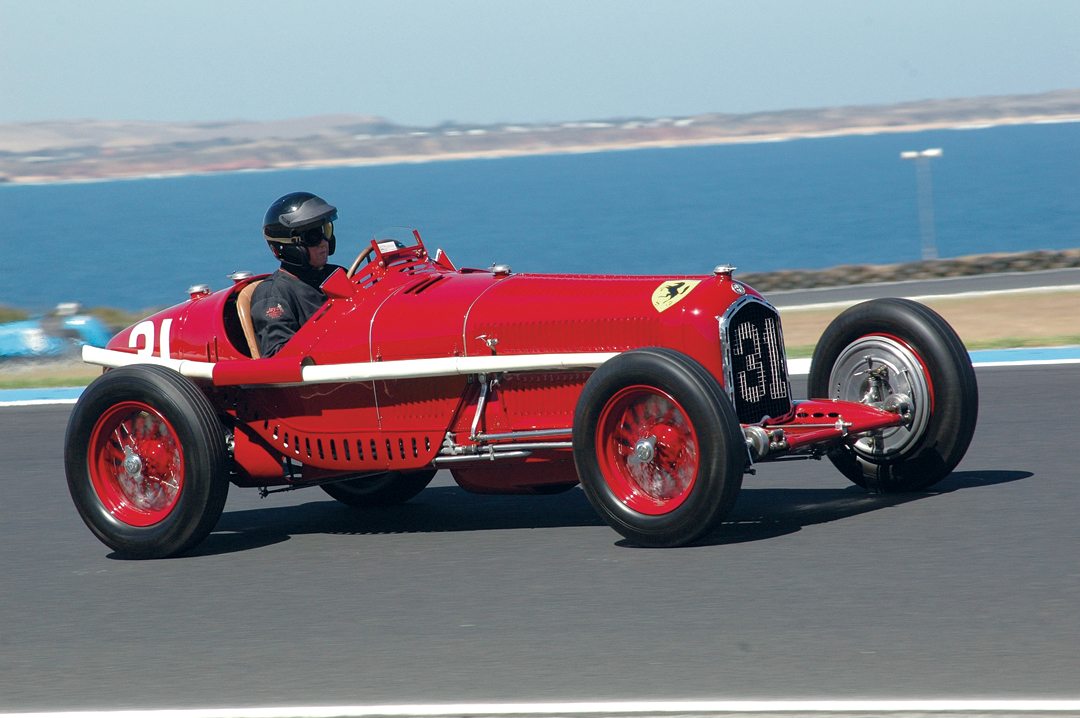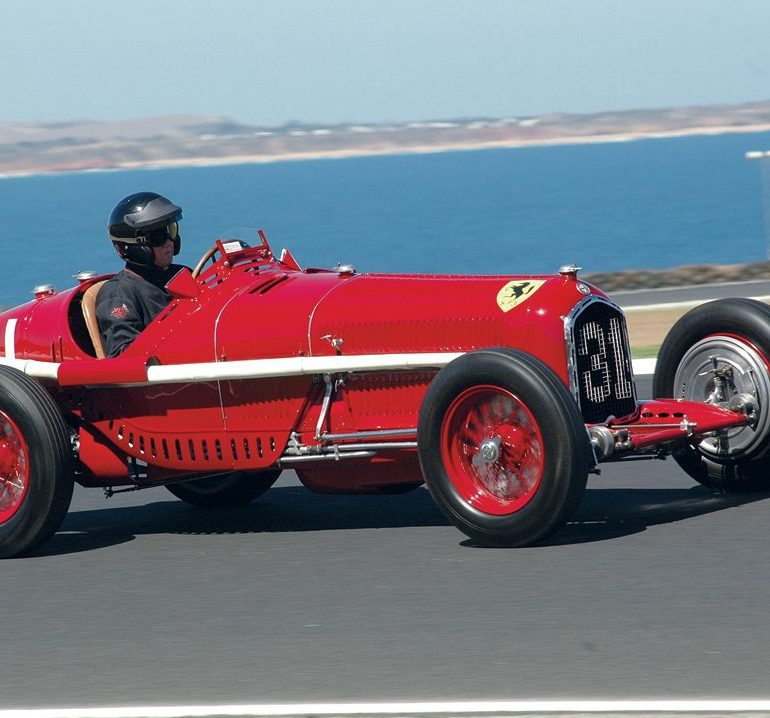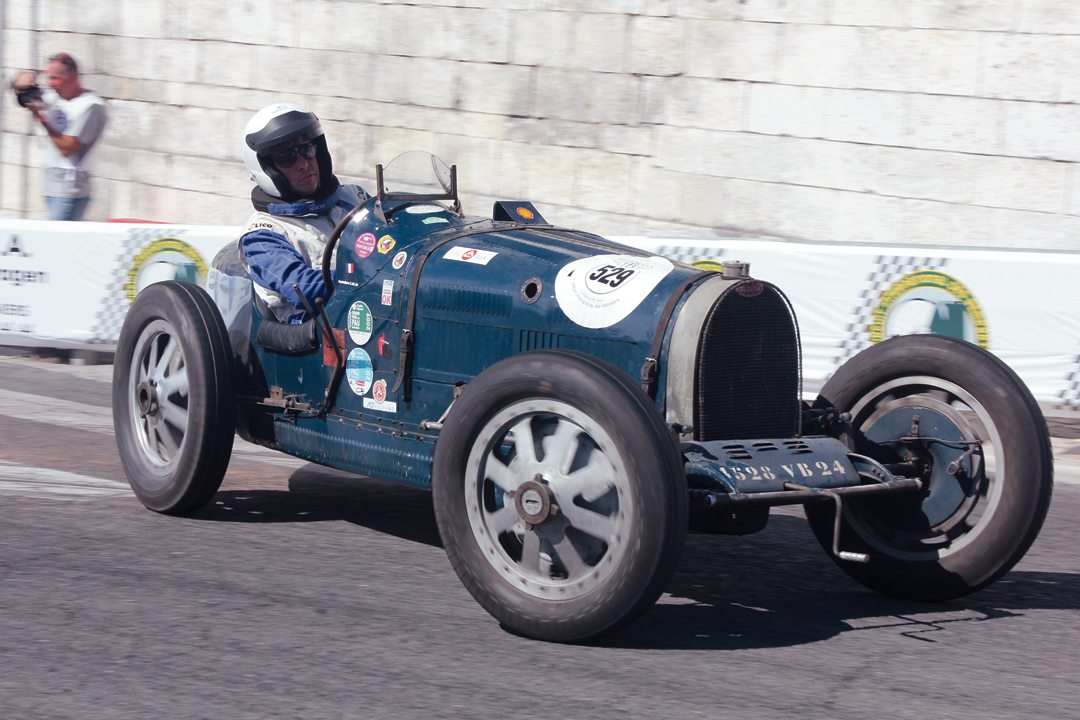From the very beginning of the automobile, man built cars to compete with a passion for speed and technology. These early innovators are in an elite club with their place in automotive history guaranteed as the creators of a true classic sports car, a genuine thoroughbred.
The development of the racing sports car can be traced to specific manufacturers, who at one time in history dominated motor racing, in particular, the world’s most challenging road races, such as the Mille Miglia, Targa Florio and endurance contests such as the Le Mans 24 Hours.
The creation of an automobile that could win in international competition was usually the inspiration of one passionate man, an engineer, a genius, who put all of his design and engineering skills toward his goals.
Part one of this pre-war market guide will feature some of these exciting cars, along with their founders and designers: Bugatti—Ettore Bugatti, and Alfa Romeo—Nicolo Romeo.
Today, these pre-war masterpieces are highly sought after by the sophisticated collector. They and their current owners are often invited to partake in some of the most prestigious historic racing venues world wide—the Le Mans 24 Hour Classic, Mille Miglia Storica, Monaco Historique Grand Prix and the Targa Florio, to name but a few.
Due to the age of these cars and their racing heritage, their value is determined by their originality and provenance. Old cars built up from parts are not the same as true complete survivors. In many cases, this attrition can bring the remaining total down to less than ten good surviving examples of a particular model.
| Make | Model | Level III | Level II | Level I |
| AC | 12/24 | $100,000 | $125,000 | $175,000 |
| 12/40 | $100,000 | $125,000 | $175,000 | |
| Ace 16/56 | $125,000 | $175,000 | $225,000 | |
| Ace 16/66 | $150,000 | $200,000 | $250,000 | |
| Ace 16/80 – 16/90 | $175,000 | $225,000 | $275,000 | |
| Alfa Romeo | RL Targa Florio | $1,000,000 | $1,200,000 | $1,300,000 |
| 6C 1500 SS/SC | $1,000,000 | $1,200,000 | $1,300,000 | |
| 6C 1750 GS/SC Zagato | $1,500,000 | $1,750,000 | $2,000,000 | |
| Tipo B Monoposto P3 | $7,000,000 | $8,000,000 | $9,000,000 | |
| Tipo C Monoposto 8C35 | $5,000,000 | $6,000,000 | $7,000,000 | |
| Tipo 8C 2300 | $6,000,000 | $7,000,000 | $7,500,000 | |
| Tipo 8C 2300 Lungo (Le Mans) | $6,000,000 | $7,000,000 | $8,000,000 | |
| Tipo 8C 2300 Corto (Mille Miglia) | $6,000,000 | $8,000,000 | $9,000,000 | |
| Tipo 8C 2300 Spider Corsa (Monza) | $7,000,000 | $9,000,000 | $10,000,000 | |
| Tipo 8C 2900B Lungo | $8,000,000 | $9,000,000 | $10,000,000 | |
| Tipo 8C 2900B Corto | $9,000,000 | $10,000,000 | $11,000,000 | |
| Alvis | 4-Cyl., FWD | $250,000 | $300,000 | $350,000 |
| Amilcar | 6C | $200,000 | $250,000 | $300,000 |
| Aston Martin | Ulster Mk II | $500,000 | $600,000 | $700,000 |
| Lemans | $600,000 | $700,000 | $800,000 | |
| 2-Liter Speed Model | $350,000 | $450,000 | $500,000 | |
| Bentley | 3-Liter Speed Model | $900,000 | $1,100,000 | $1,300,000 |
| Big Six | $1,900,000 | $2,100,000 | $2,300,000 | |
| 4.5-Liter | $1,900,000 | $2,100,000 | $2,300,000 | |
| Speed Six | $4,500,000 | $5,000,000 | $6,000,000 | |
| 4.5-Liter Blower | $6,000,000 | $6,500,000 | $7,000,000 | |
| BMW | 328 | $900,000 | $1,000,000 | $1,100,000 |
| Bugatti | Type 35 | $3,500,000 | $4,000,000 | $4,500,000 |
| Type 37A Supercharged | $3,500,000 | $4,000,000 | $4,500,000 | |
| Type 51 | $4,500,000 | $5,000,000 | $5,500,000 | |
| Type 57SC Atalante | $6,500,000 | $7,500,000 | $8,000,000 |

Alfa Romeo Type B P3
For the 1932 season, racing organizers decreased the length of Grands Prix from 10 hours, down to five and made engine displacement essentially unlimited. As a result, Alfa Romeo created a new, single-seater based around an expanded 8C 2300 engine (2,654-cc) driving the rear wheels through a split final drive that featured two individual driveshafts and crown wheels. The result was a 750-kg monoposto that produced as much as 330-hp by 1934.
The car’s maiden outing was the 1932 Italian Grand Prix at Monza where, in pre-war Alfa tradition, it won in the hands of the legendary driver Nuvolari. This new model, named the Type B P3, went on to score 44 major race wins from 1932-1935, with the likes of Nuvolari, Campari, Caracciola, Fagioli, Chiron, Dreyfus and others at the wheel. In all, 15 examples were built and, in light of its significant history and pedigree, these cars rank among the most desirable and collectible of all pre-war monopostos.
By Casey Annis
 Bugatti Type 35 Grand Prix Car
Bugatti Type 35 Grand Prix Car
Ettore Bugatti, a man of Italian education whose automotive training came in Germany, maintained his Bugatti automobile factory in Molsheim, France from 1910-1939. Arguably one of the most successful Grand Prix cars of all time was his Type 35, which was first produced in 1924 and went through several stages of development culminating in the 8-cylinder, 2.3-liter supercharged type 35B. This was an innovative design with dual overhead camshafts, a hollow tubular front axle, hydraulic brakes, the first usage of cast aluminum wheels and the famous horseshoe shaped radiator. Bugatti manufactured everything himself and in his attempts at perfection, created beauty. The Type 35 won countless races, including the Monaco Grand Prix and the Targa Florio.
Criteria Used For Assessing Valuations for this Guide:
- Degree of Originality
- Overall Condition, Restoration
- Technology, Design, Coachbuilder
- Production Numbers/Rarity
- Competition History
- Ownership History, Documentation
- Modern Event Eligibility
Regional Variances
The prices stated in this guide are based on U.S. values. The values of historic racing cars can vary as much as 25%-35% in other countries, depending on local market appeal, currency rates, import duties, and VAT. Most of the time, we are able to document known sales or closed escrows, as they say in real estate. When this is not possible, a logical estimate of the car’s value is given, based on its sales history and relationship to cars of its type.
The prices stated in this guide are based on U.S. values. The values of historic racing cars can vary as much as 25%-35% in other countries, depending on local market appeal, currency rates, import duties, and VAT.
LEVEL |
VALUATION CATEGORIES |
|---|---|
I |
The best combination of all criteria. |
II |
Satisfies mid-range of criteria. |
III |
In need of restoration. Meets only a few points of criteria |





